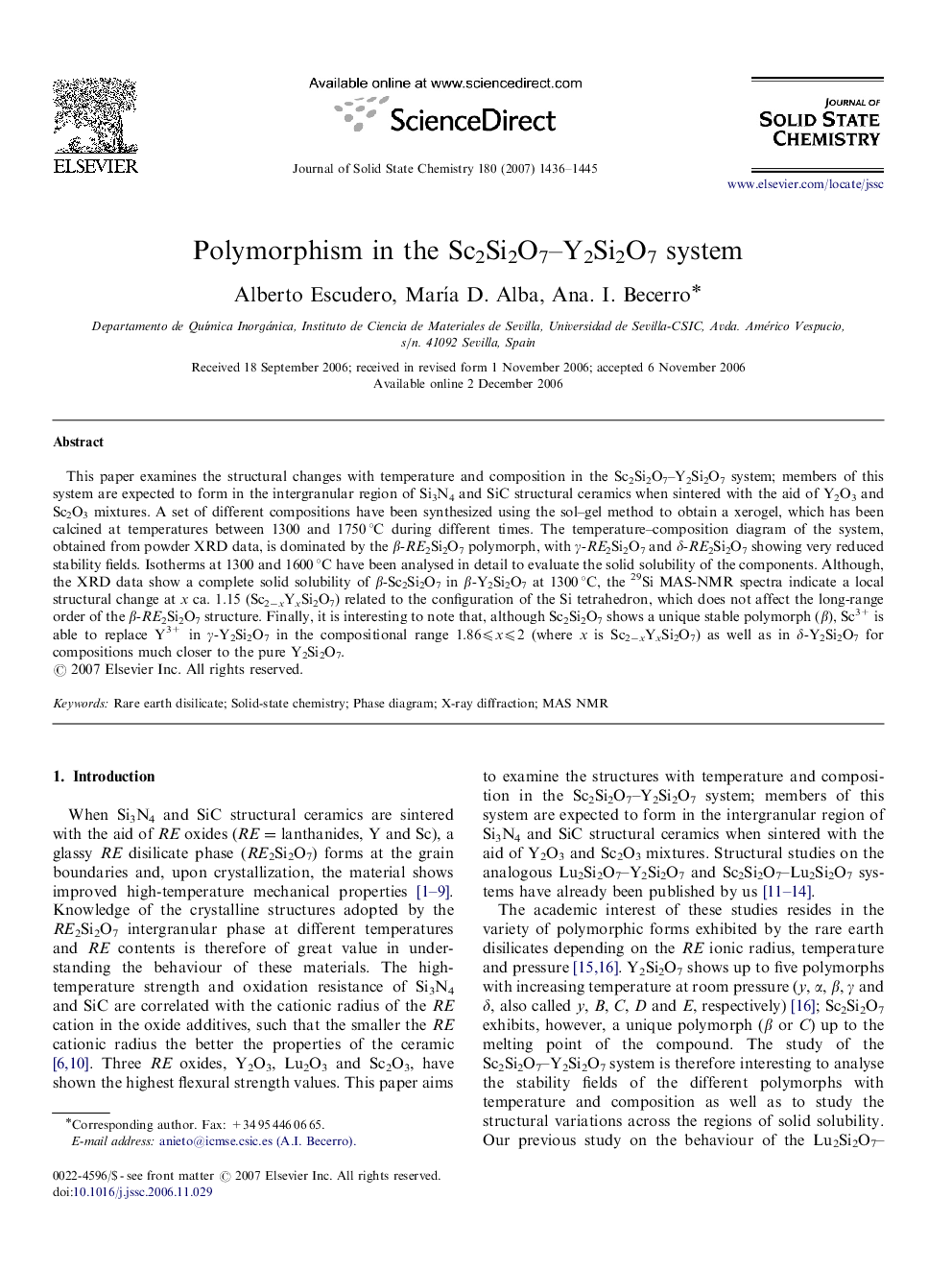| Article ID | Journal | Published Year | Pages | File Type |
|---|---|---|---|---|
| 1333302 | Journal of Solid State Chemistry | 2007 | 10 Pages |
This paper examines the structural changes with temperature and composition in the Sc2Si2O7–Y2Si2O7 system; members of this system are expected to form in the intergranular region of Si3N4 and SiC structural ceramics when sintered with the aid of Y2O3 and Sc2O3 mixtures. A set of different compositions have been synthesized using the sol–gel method to obtain a xerogel, which has been calcined at temperatures between 1300 and 1750 °C during different times. The temperature–composition diagram of the system, obtained from powder XRD data, is dominated by the β-RE2Si2O7 polymorph, with γ-RE2Si2O7 and δ-RE2Si2O7 showing very reduced stability fields. Isotherms at 1300 and 1600 °C have been analysed in detail to evaluate the solid solubility of the components. Although, the XRD data show a complete solid solubility of β-Sc2Si2O7 in β-Y2Si2O7 at 1300 °C, the 29Si MAS-NMR spectra indicate a local structural change at x ca. 1.15 (Sc2−xYxSi2O7) related to the configuration of the Si tetrahedron, which does not affect the long-range order of the β-RE2Si2O7 structure. Finally, it is interesting to note that, although Sc2Si2O7 shows a unique stable polymorph (β), Sc3+ is able to replace Y3+ in γ-Y2Si2O7 in the compositional range 1.86⩽x⩽2 (where x is Sc2−xYxSi2O7) as well as in δ-Y2Si2O7 for compositions much closer to the pure Y2Si2O7.
Graphical abstractStructural changes with temperature and composition in the Sc2Si2O7–Y2Si2O7 system are analysed using XRD and 29Si MAS NMR. The temperature–composition diagram is dominated by β-RE2Si2O7, with γ-RE2Si2O7 and δ-RE2Si2O7 showing very reduced stability fields. The analogous Lu2Si2O7–Y2Si2O7 system shows much wider γ-RE2Si2O7 and δ-RE2Si2O7 fields, due to the higher radius of Lu3+ compared to Sc3+.Figure optionsDownload full-size imageDownload as PowerPoint slide
